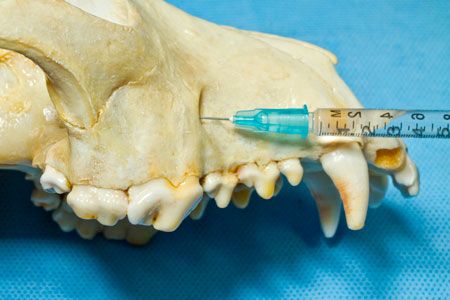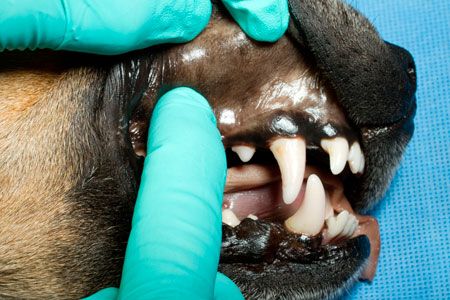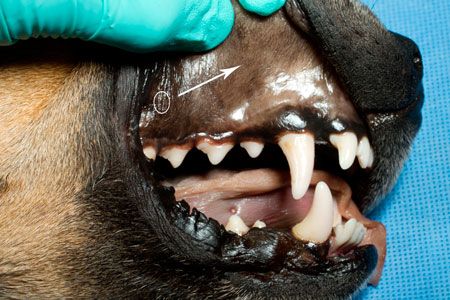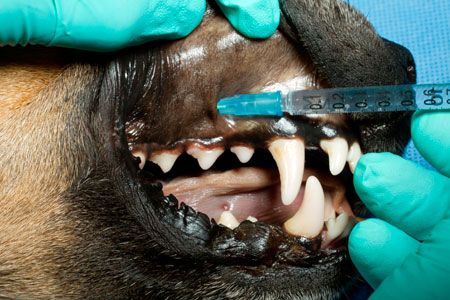Rostral maxillary (infraorbital) regional block
This block provides analgesia to the incisors, canine, and first three premolar teeth of the corresponding side.
Next >
This block affects the infraorbital nerve and the rostral maxillary alveolar nerve. It provides analgesia to the incisors, canine, and first three premolar teeth of the corresponding side. The adjacent maxillary bone and surrounding soft tissue are also affected.
Step 1

Use a skull to identify the infraorbital foramen just mesial to the mesiobuccal root of the maxillary fourth premolar. The needle is shown passing through the foramen and into the infraorbital canal.
Step 2A

To perform the infraorbital nerve block, retract the upper lip dorsally, and palpate the infraorbital foramen.
Step 2B

Also, palpate the infraorbital neurovascular bundle as it exits the infraorbital canal and courses rostrodorsally. The circle represents the infraorbital foramen, and the arrow demonstrates the course and direction of the corresponding neurovascular bundle.
< Back
Step 3

With the lip and the bundle retracted dorsally with one hand, use the opposite hand to advance the needle close to the maxillary bone ventral to the retracted bundle in a caudal direction to a point just inside the canal. The needle should pass into the canal without hitting bone. If bone is encountered, withdraw the needle slightly, and redirect it to pass easily into the canal.